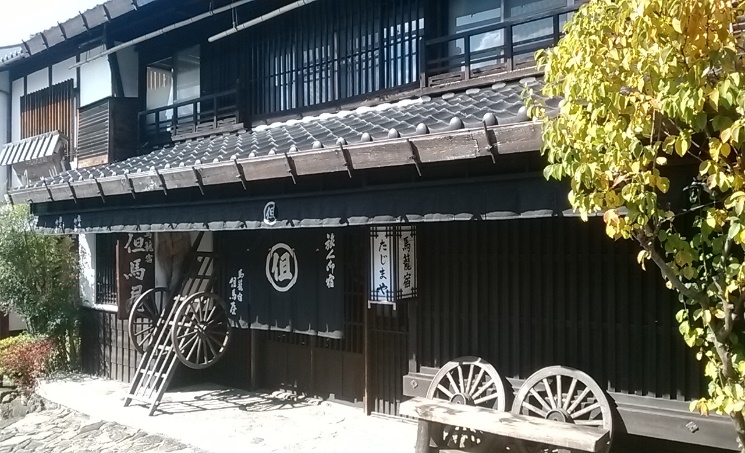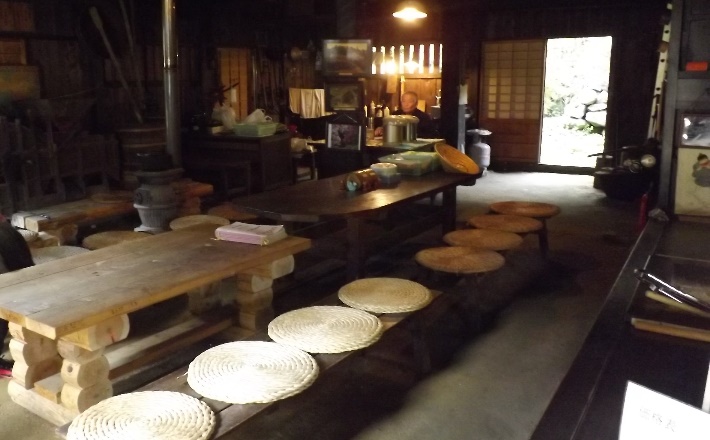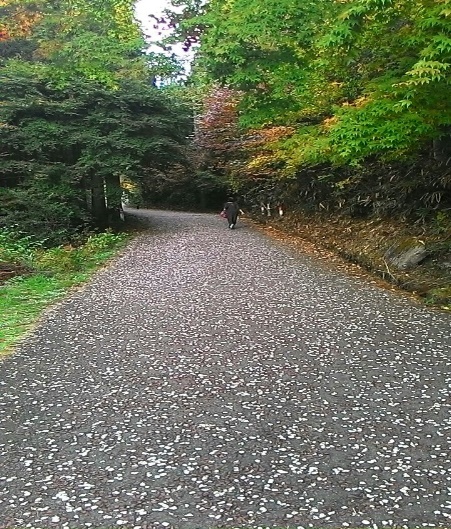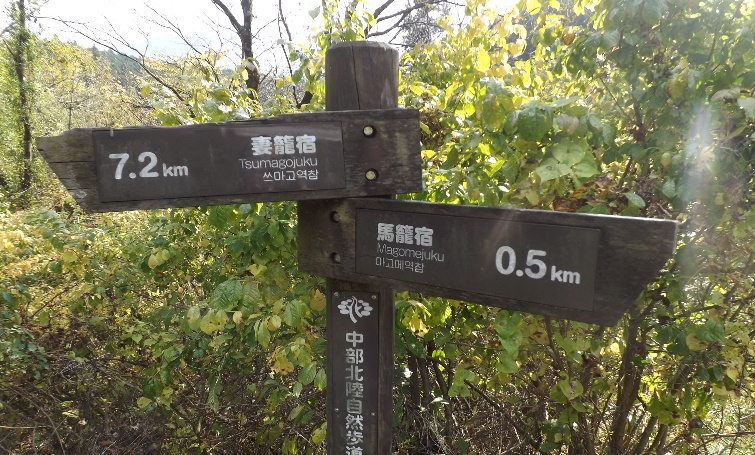by Sze-Leng Tan
Never did I realise that it was a journey of no return. Never did I realise that the trail I followed that day, on a sunny mid-autumn day in 2014, was an answer to my heart’s calling.
The Magome-Tsumago trail in Japan is part of the 700-km Nakasendo Highway in Kisoji (or Kiso Valley) which extends from Nagano Prefecture to Gifu Prefecture, weaves through and along the mountains of the Central Alps. The Highway was a vital ancient route for traders travelling between Tokyo and Kyoto during the Edo period. Defying time and change, both Magome and Tsumago are post towns which were rest stations for those traders. Both are joined by the trail like a red thread that draws a good marriage between yin and yang.
My journey from Magome to Tsumago was launched with a climb. A rustic water mill rotated leisurely outside of a house with Edo-architectural design, restraining the urge to divulge the transformational power behind this well-preserved legacy I was about to explore. The leading narrow, tapered cobblestone street next to the mill climbed steeply uphill, running along smoothly, only interrupted occasionally by flights of stairs. The street was framed on both sides by low feudal-style wooden houses. The black-and-white minimalist décor of old-latticed windowed residential houses, inns, tea houses, restaurants and souvenir shops were time-machines on their own. It seemed like there was an organic, artistic side to Japanese technology. And I knew, for sure, then and there that there was no other way I could connect with the soul of Japan better than a visit to its past, with a fully present frame of mind.
The traditional village houses teeming the heart of Magome was gradually replaced, as I kept going uphill, by grassy fields and masses of woodland trees on both sides of the trail, like willowy girls wrapped in auburn Kimonos. The path led to the peak of Mount Ena, elevated at more than 2,000 m, where I enjoyed a bird-eye view of the surrounding mountains in Kisoji. The match-box houses and the massive maple richness were serenading me from the depth of the valley. I enjoyed a moment of reminiscence, peace and magnificence there, feeling myself light and powerful, like a heroine ready to fulfil her destiny!
Leaving Magome and my memories behind, I went uphill first and then down. Effortlessness accompanied my descent and surreal calmness guided my every step. The woods painted a picture of pastoral serenity, vibrant green lightly adorned with persimmon sweetness and Safire passion.
The Sweet-Potato Lady in the Farm
Then, the crossing of an empty highway welcomed the first sight of a ‘real’ village. All Magome’s busy-ness vanished.
An old lady appeared in this New World I entered, came carrying twigs in a rattan pack basket. She plodded towards the path from one of the farms, hunched with the weight of her burden. Upon noticing my presence, she waved at me and I waved back. Her body looked frail but her footsteps were steady. Her tanned, wrinkled face was shining with infinite vivacity. She was beautiful.
She then kept half-waving and half-shooing. I found it a little confusing and, in the end, she pointed over my shoulders as she was approaching me, so I turned my head. Two baskets sat nonchalantly at the porch of a humble hut. Sweet potatoes piled up over the brims of the baskets. A sign bearing Japanese words with the yen symbol at the front, handwritten, stiffly perched on one of the piles. I understood finally what the lady summoned me to do. I chose two sweet potatoes from the baskets, fished out a handful of coins from my pocket and opened my palms for the lady to pick the appropriate amount.
She smiled generously, emanating child-like radiance and joy. The deepened lines that decorated her face made her even lovelier, in a graceful, empowering sort of way. I bowed to her and she bowed back twice as low as I did. I had to bid her farewell as the journey ahead was still long.
I bit a mouthful of the grilled sweet potato. It was gluey and bland, did not taste as good as the ones I ate in China and Malaysia. But I savoured them, as I savoured the thought of how beautiful life could be if we believed that our happiness, wellness, and beauty were our birth rights and claimed it fully regardless of what insecurity and negativity our dominant culture tried to convince us about aging. My lightened footsteps carried me through, passing by a pavilion and more farms with vegetables whose names were unknown to me.
………
The road ahead was rather flat.
I entered into a universe of Haiku. Cottages of heart-warming simplicity lined up side by side. The tendency to economise space transfused all corners of Japan even the rural area. Yet, the density of the houses only enhanced the thickening tranquil air. Not a single soul was in sight.
While I was musing poetically, an open hut emerged on the side, like an unexpected ending of a rhyme. An investigation was necessary to satisfy my curiosity.
The Candy Man in the Teahouse
An old man sat behind a row of long tables, at the further end of the hut which, now, I realised to be a teahouse. He put on his sugegasa, a Japanese conical hat, and joined the welcoming team of furniture but with an exuberant smile!
The wooden rustic décor exuded an air of intimacy, dissolving social barriers and time lapse. I sat gingerly at the table on which a pot of tea and some teacups was set. The man came to offer me some sweets, still smiling profusely. He dressed in a Yukata, probably in his 60s, rather well-built but soft in his face. There was something about him — his sense of pride, his bearing, his existence, or his social standing, whatever it was — that made him respectable but not threatening. He asked me where I was from in his sincere and confident English. I was sure he was an admiral, commander or samurai in his earlier life.
The kind old man then asked me where I was going and upon confirming my destination, he warned that the walk to the next village would take an hour. I noticed the cautionary tone in his voice and knew that there was going to be quite a journey ahead. Suddenly, his formal hospitality was replaced by a fatherly concern. I thanked him, finished the last of my green tea and waved him goodbye, as he saw me off at the doorway.
That must be it! That was what he was trying to show me – that pride did not have to compromise kindness, that strengths did not have to replace gentility – beneath the disguise of this brief encounter.
There was no coincidence in the woods.
The Immortal Writer in the Valley
A sharp incline in the hiking trail ushered me to the Magome Pass. Upon crossing the highway, the change of texture and tones of the autumn maple song was immediately felt. My deliberate pace did not distract me from the dreamlike stillness. The woodland trees filtered out the afternoon sun which was falling down like caressing rain.
‘The entire Kisoji is in the mountains’. Toson Shimazaki’s words echoed through the woods. The roller-coaster trek was the rise and fall of the romantic poet and naturalist writer’s empires, of the peaks and valleys of his life. Like leafing through the pages of Yoakemae (Before the Dawn), the refreshing fragrant air brought back a misplaced time during the Meiji Restoration. Surrounded by flickering lights sifted through bamboos, my consciousness was part of his immortal temple, with my awareness of Eternity heightened in my ephemeral body.
Was this the trail that Shimazaki took everyday as a meditative practice to strengthen his literary muscles and spiritual connectedness with all lives in the cosmos? Was this the home for his inner rebel who was dying to be free, free from the pseudo-hyper-modernity that dictated how his life should have been bound? Is This the answer for all that we – peace-seekers, beauty-makers, soul-lovers — are looking for?
Now, at the home of this literary genius’ soul, the gurgling stream running under a wooden bridge seemed to be teasing my overwhelmed sentiments. The waterfalls cleansed away my doubts and pre-occupations. The crisp air permeating all around me — all Elements, all thoughts and feelings — reminded me of how close I was with everything seemingly so distant — the past, present, and future — of how limiting my views and sensory perceptions had been.
My contemplative solitude was interrupted by a group of hikers of about five or six, coming from the opposite direction of the trail. They were primarily gaijin. I said hello to them and they replied with a cheerful resonance of ‘Konnichiwa’.
There were no loners in the woods.
*******
Already quite exhausted, I scrambled down a heart-pumping ultra-steep slope at the bottom of which erected a signpost, ‘1.5km’, indicating the remaining distance to Tsumago. There lay a highway as clear of vehicles and pedestrians as my mind was free of burdens.
(Photo by Sze-Leng Tan: One of the multilingual signposts found along the trail)
Across the highway was Tsumago where there were signs of human life all over again. Although the sunlight was now faint and the hanging lanterns from the eaves dim, the houses here were still discernibly newer than those in Magome. I regretted missing a clear view of Tsumago. But some beauties were only better admired in the dark. After climbing steps, crossing bridges, trotting on a hard cobblestone road and hastening through the heavily misty evening air, I finally reached a clearing where I slowed down and scrutinised the area.
The Singing Man in the Toilet
It was round with a humming sound. On one side of the clearing, a red-and-white sign stood outside of a row of obscured rooms from which a tune came. I sought the source of the music which led me to the unlikeliest place from which it could come — one of the toilets in the row, as I now found out, in a mass of pitch-darkness.
An old man, small, agile, was scrubbing the toilet floor while humming away like he was gardening or tending to his grandchildren. I told him I was catching a bus to Nakatsugawa Station and then to Nagoya. He showed immense empathy, listening attentively and clarify thoroughly to make sure he understood what I said. Then, he asked me to wait for him as he rushed off to the small buildings at the opposite side of the clearing. I waited. The light in one of the buildings turned on. They must have been offices of some sort. The light then vanished. The man hurried back to me.
Smiling like fireflies in the dark, he waved euphorically before reaching the bus top and confirmed to me in a triumphant tone, ‘Hai! Last bus. 5.40. Here. Wait.’
He bowed dutifully, ‘Hai!’
I checked on the time and it was five minutes to 5.40. I was both thankful and relieved beyond words.
‘Arigato Gozaimashita!’
I bowed to him with all my respect and gratitude. Before I could think of more things to say, he disappeared into the toilets like a Ninja would and resumed his duty with overwhelming enthusiasm. The Japanese tune of which I did not understand a word was heard again.
Live your life, glow in the dusk with honour. Your age and social status shouldn’t be a bother, I heard him sing.
The song was drowned by a mechanical roar, signalling a close to this episode of my journey. I went aboard the bus which had just arrived and took on an adventure of another kind.
*****
Thank you, this Journey of mine. I owed it to the three beautiful soul strangers and an immortal artist of literature for the universal messages I received.
Lived yet lovely. Strong yet gentle. Gone yet timeless. Proud yet humble. We are.
The highway cruise was blooming with intensified vitality and nobility, even after the sky had long turned dark and grey. Namaste!
Editor’s Note on Three Strangers and a Writer on the Magome-Tsumago Trail: A Journey:
Three Strangers and a Writer on the Magome-Tsumago Trail: A Journey is not Sze-Leng Tan’s first work to appear in Eastlit. Her previous published pieces are:
- Saving Princess Pingyang was published in Eastlit June 2015.
- Miyagawa featured in Eastlit August 2015.







